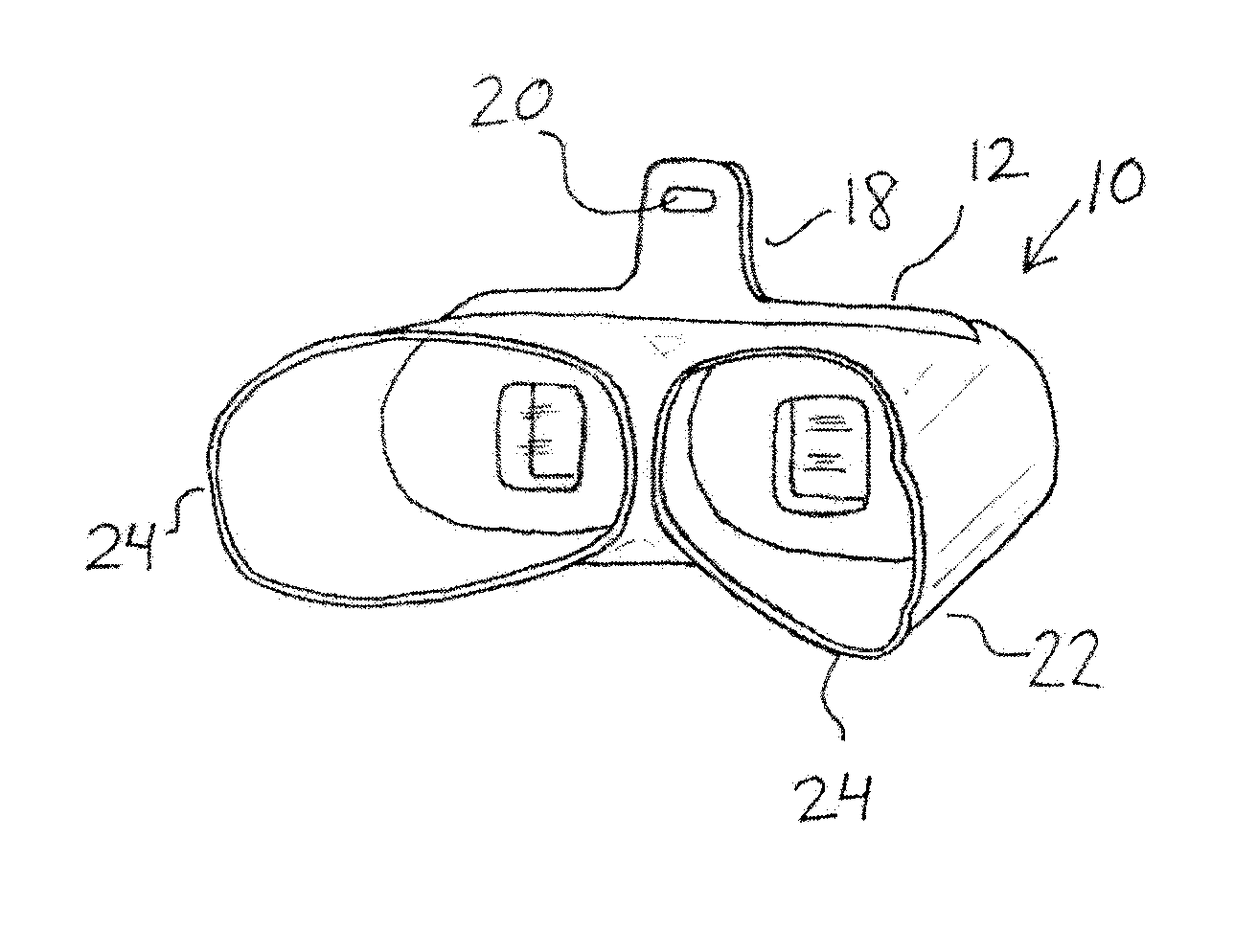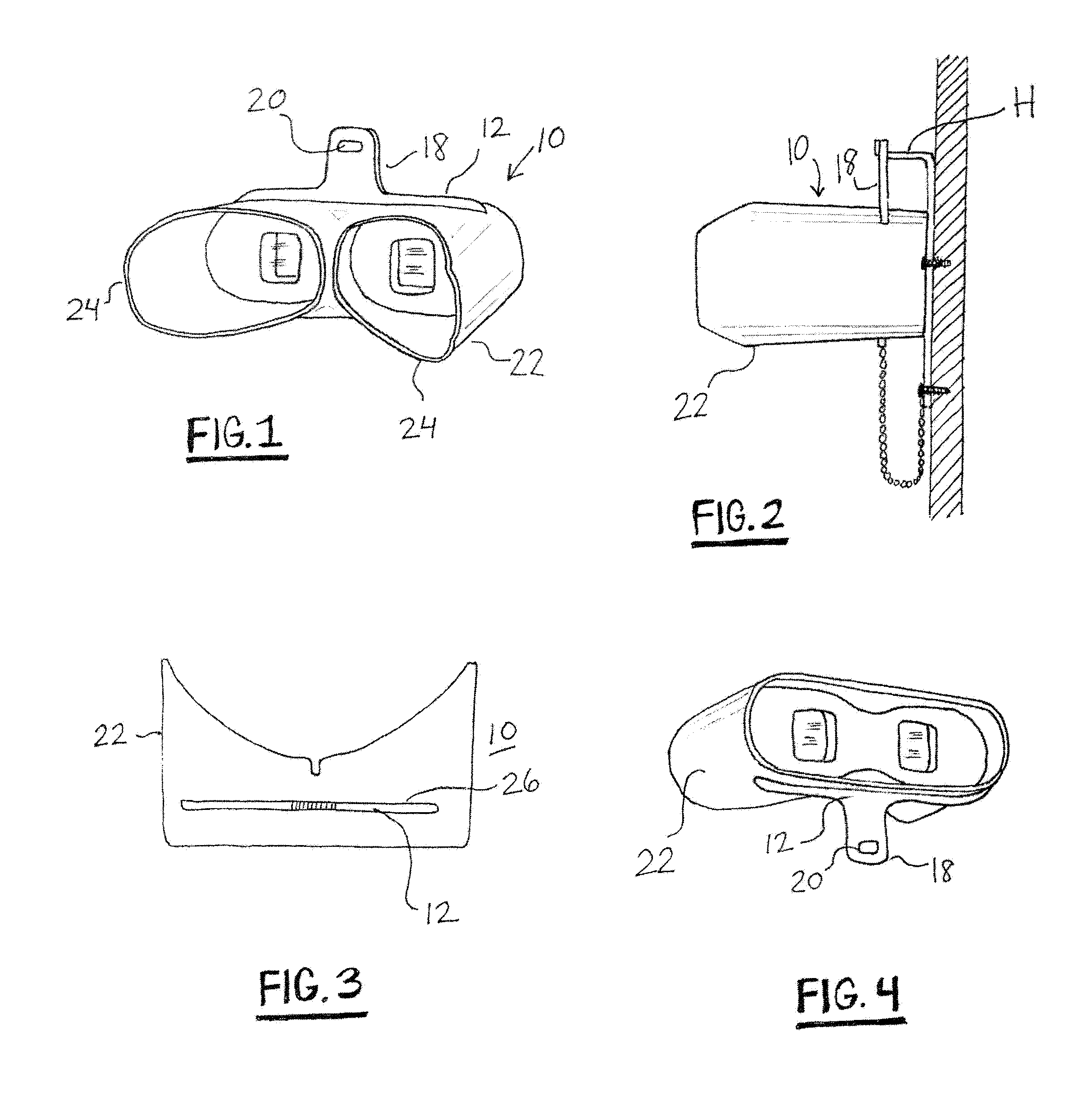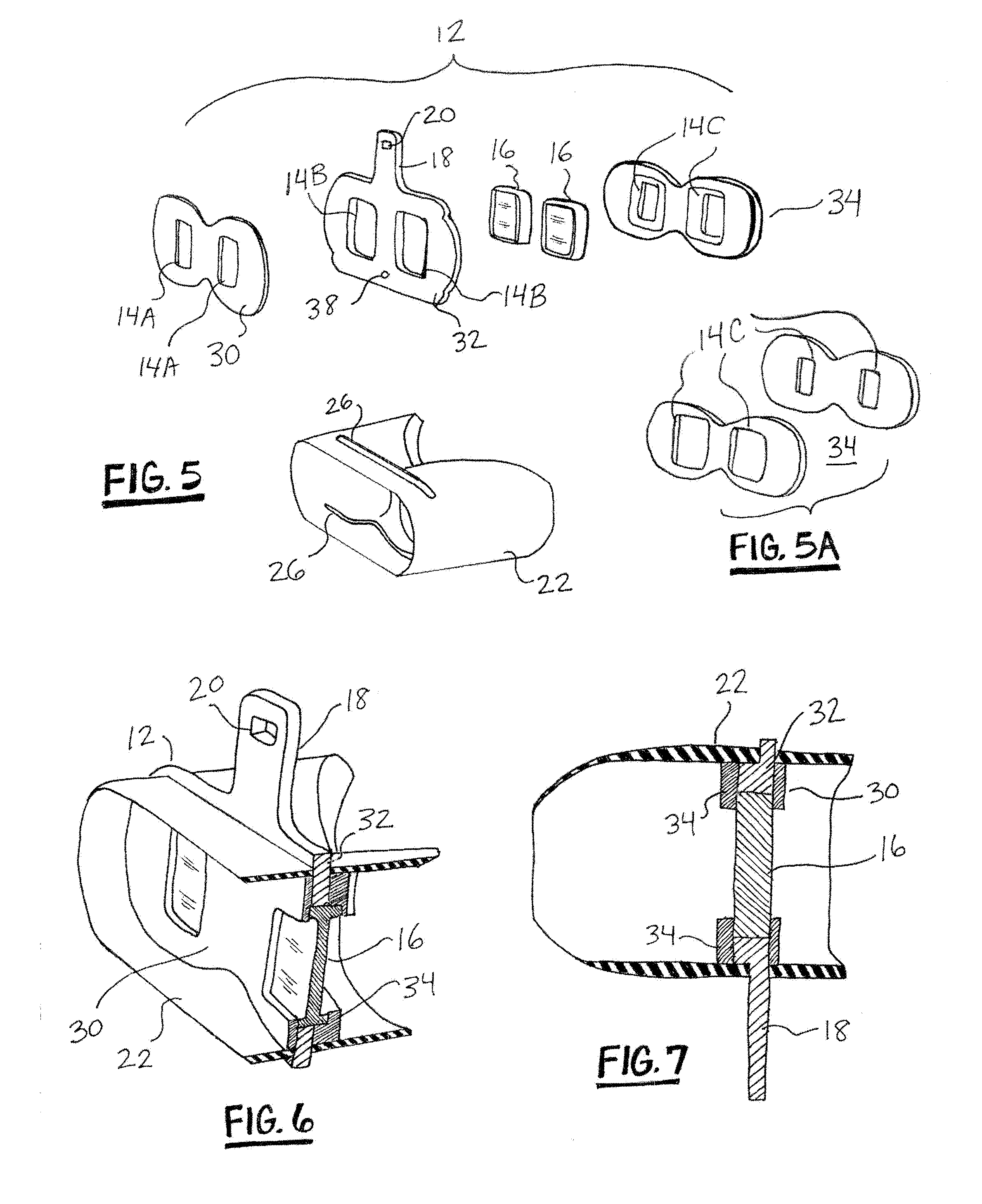TwinScope 3-D Viewer
a viewer and twin-scope technology, applied in the field of twin-scope 3d viewer, can solve the problems of poor optics, inferior viewers are utilized, and the viewer is seldom available for public use in the archiv
- Summary
- Abstract
- Description
- Claims
- Application Information
AI Technical Summary
Benefits of technology
Problems solved by technology
Method used
Image
Examples
Embodiment Construction
[0017]With reference to the Drawing and initially to FIGS. 1 to 7, the TwinScope Viewer or stereoscope 10 is designed for viewing stereographs or other side-by-side stereoscopic images that have a combined width of not more than eight inches. The stereoscope 10 is designed to be used in the stem-up or stem-down position for viewing stereographs in a variety of configurations, including those that are framed for wall display, as well as stereographs in display cases, reprinted in books, viewable on a computer monitor or other digital device, or held loose in the hand. The TwinScope Viewer can be used with stereo image pairs that are up to about eight inches left-to-right and about four inches in height.
[0018]Here the stereoscope has a lens board 12 that is formed of three flat members that are cemented together (as shown in FIGS. 5, 5A, 6 and 7), with rectangular openings 14 within which the left and right prismatic lenses 16 are mounted. A stem or handle 18 projects from the center ...
PUM
 Login to View More
Login to View More Abstract
Description
Claims
Application Information
 Login to View More
Login to View More - R&D
- Intellectual Property
- Life Sciences
- Materials
- Tech Scout
- Unparalleled Data Quality
- Higher Quality Content
- 60% Fewer Hallucinations
Browse by: Latest US Patents, China's latest patents, Technical Efficacy Thesaurus, Application Domain, Technology Topic, Popular Technical Reports.
© 2025 PatSnap. All rights reserved.Legal|Privacy policy|Modern Slavery Act Transparency Statement|Sitemap|About US| Contact US: help@patsnap.com



